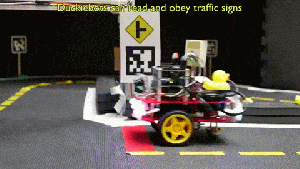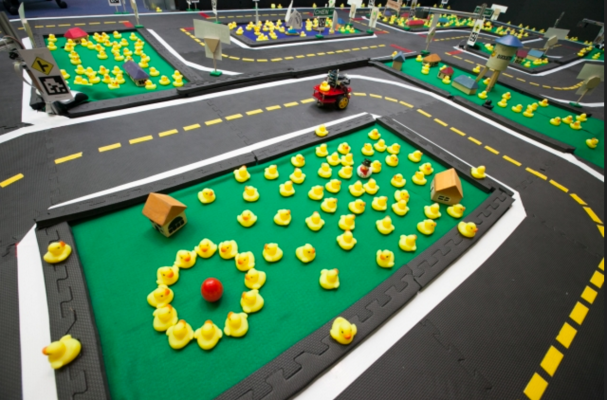Self-driving cars seem an awful lot like magic. They contain elements of automotive technology, computer vision, artificial intelligence and many other cutting-edge fields of tech. So, if you wanted to learn how it all hangs together, where would you even start? MIT decided to start with… rubber duckies.
Letting students loose on actual 3-ton vehicles with the power to kill, maim and otherwise cause a nightmare for lawyers might be a little bit much. To get around that, and to still help ignite students’ imagination, MIT’s Computer Science and Artificial Intelligence Laboratory (or, a far more palatable “CSAIL” for those in the know) created Duckietown, a project where 50 rubber duckies have to autonomously interact on a model city, navigating traffic signs, road markings and each other in perfect harmony.

Oh to be a student again; this looks like too much fun.
The first class project was ambitious: create a fleet of autonomous taxis (for the rubber duckies, of course). The challenge: Do so with a single on-board camera, and without pre-programmed maps of the environment. I don’t know about you, but that sounds like a preposterous amount of fun, and it’s making me sad I’m not in school anymore.
To create a consistently accurate system, the students were put to the challenge, needing to make engineering decisions and trade-offs. For example, given the choice between sophisticated algorithms with cheaper hardware or simpler algorithms with more reliable hardware — what’s the right decision?
The project is not a one-off, however; CSAIL hopes to make this the jumping-off point for a number of more ambitious projects.
“We believe a tool like this will help create a common platform and language for researchers to build on,” says Liam Paull, who co-leads the new course with research scientist Andrea Censi. “We hope this will make it easier for computer scientists to continue to work together to bring autonomous vehicles into the real world.”
And, presumably, safer transport options for rubber duckies who’ve had one or two too many.
See ’em in action in the video below.
